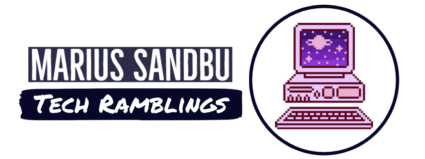A few years back I published a piece for TechTarget that stacked App Attach up against the rest of the app-layering crowd, and how the “old” MSIX AppAttach service worked. Now Microsoft has made several changes both in their application virtualization stack but also the AppAttach service has gotten some improvements.
Microsoft has reversed course on several key items announced earlier:
- The earlier end-of-life notice for the App-V Client has been withdrawn.
- Deprecation of the App-V Sequencer has likewise been withdrawn.
- App-V Server, however, is still scheduled to sunset in 2026.
- Azure Virtual Desktop (AVD) App Attach can now deliver both MSIX and App-V packages.
- The original MSIX-only App Attach feature was retired on 1 June 2025.
- Third-party vendors will be able to hook into the new App Attach, surfacing their own delivery logic directly in the Azure portal.
The takeaway: organisations that still rely on App-V can keep doing so—only now they’ll only be able to deliver those packages through App Attach inside AVD.
Think of App Attach as a delivery mechanism for MSIX, App-V and AppX apps to Azure Virtual Desktop session hosts. App-V remains a classic virtual-app format; AppX is essentially a wrapper for UWP Store apps; and MSIX is Microsoft’s modern packaging format for Win32, WPF and WinForms workloads. MSIX can run in an AppContainer so each app’s processes see an isolated file system and registry, allowing multiple versions to coexist without tripping over one another.
MSIX now runs on Windows Server 2019 and 2022 as well as Windows 10 and 11 (single- or multi-session). App Attach itself, however, only supports Windows 10 and 11—both single-user and multi-user—inside AVD. Note that while Azure Virtual Desktop is available on Azure Local, App Attach is not.
Instead of copying a compressed MSIX into the VM, App Attach mounts an uncompressed disk image—VHD, VHDX or (ideally) CimFS—straight from an SMB 3 share. Mounting happens at user sign-in, followed by staging and registration of each package. CimFS is the preferred format on Windows 11 because it mounts faster, hits the CPU less and sidesteps the 256-character path limit that plagues VHD/VHDX.
NOTE: There is still an ongoing issue with CimFS on build 24H2

Because the files are stored uncompressed, expect each application to consume roughly two-and-a-half times the space its MSIX would use. The upside is that you don’t need any extra infrastructure beyond a file share. Microsoft recommends Azure Files (compatible with both Entra ID and AD DS); Azure NetApp Files is also an option if your hosts are AD-joined.
One of the benefits of “New” App Attach compared to the older version is that it now supports both common identity options, either Active Directory or Entra ID joined. This allows you also to handle deployment without the need of any Active Directory domain controllers.
You should also confirm that the following production-ready settings are in place if you plan to use AppAttach:
- Keep the file share in the same Azure region as your session hosts.
- If you’re using Azure Files, make sure the storage account sits in that same region too.
- Exclude the read-only application disk images from antivirus scans such as Microsoft Defender.
- Use a separate file share for FSLogix profile containers.
App Attach is on track to become the default way to deploy applications to AVD. With native App-V support in place, enterprises can postpone—perhaps indefinitely?! —the heavy lift of converting stubborn packages to MSIX. Even after the compatibility boosts in Windows 11 24H2, many legacy apps still refuse to cooperate.
That’s where the new third-party integrations step in. Vendors such as Liquidware FlexApp, Numecent Cloudpager and Omnissa App Volumes will also plug directly into App Attach. Besides higher conversion success rates, they can group related apps into their own virtual sandboxes, enable cross-platform delivery (physical PCs included), and remove the headache of code-signing every package—something raw MSIX still insists on.
Naturally, those added capabilities come with licensing costs. Whether they’re worth it depends on your own mix of legacy apps, security requirements and the control you need over dynamic delivery.
